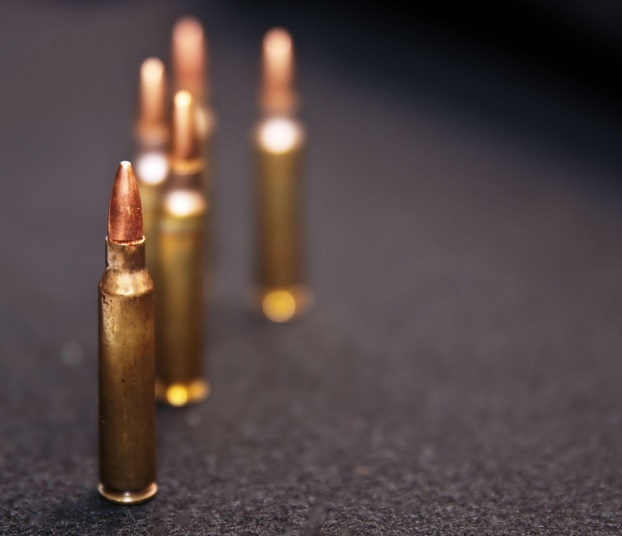The .223 Remington is a great rifle cartridge for so many different reasons. It is flat-shooting, it is accurate, it has a long max effective range (up to 1000 yards, depending on application and load data), and it is widely available. It is also affordable, for what it’s worth.
On top of that, there is a massive assortment of popular firearms chambered in .223 Remington, from America’s Rifle to a whole host of bolt-action rifles. There are even lever guns chambered in .223.
Naturally, all of these factors have converged to keep .223 popular, and demand for .223 bulk ammo remains high.
But this is still an era of shortages and high ammo prices. Before you dive into the piggy bank to carve out some cash for a .223 bulk ammo purchase, you should make sure you’re getting the right thing.
We don’t mean the right cartridge, or even the right bullet. It’s the weight we’re talking about here. Since .223 Remington ammo varies in weight between bullets in the ~30 grain class (that’s basically a .22LR bullet at that point) to heavier than 80 grains, there is a considerable variance in bullet weight in this cartridge.
And yes, there is a massive difference in how a 35 grain bullet shoots versus how an 80-grain .223 Rem bullet shoots.
Let’s take a look.
Lightweight Bullets (Under 50 Grains)
Lightweight bullets can be used to generate (in general) the highest muzzle velocities with .223 Remington, and because of their light weight, they will produce the least recoil (all else being equal).
Because of their light weight, at intermediate ranges, they can be suitable for target shooting and competition because they are extremely flat shooting and wind drift isn’t as much of a concern.
Depending on the type of bullet loaded (full metal jacket vs. soft point or hollow point, for example) lightweight .223 ammo can also be effective for some sporting applications, such as varmint control. Lighter bullets will have no trouble dispatching small varmints, and are flat-shooting too.
The lighter the weight of the bullet, the lower the recoil, which can make these suitable for recoil-sensitive shooters and beginners as well.
One thing to note here: though the lighter bullets will exhibit the lowest bullet drop, very light bullets are also susceptible to wind drift. So for extreme long-range shooting, they are not always the best choice.
Mid-Weight Bullets (50-70 Grains)
Mid-weight .223 bullets, those that for the sake of argument here weigh between 50 and 70 grains, are the most versatile in terms of performance.
Because they are not too light or too heavy, they can be used for training, high-volume target shooting, and competition, especially at close and intermediate ranges.
They will produce a little more recoil, but they are still flat shooting and suffer less wind drift than lighter bullets.
Moreover, bullets in this weight class - of an appropriate type - can be used to take medium-sized game like predators. Coyotes, foxes and mountain lions have all fallen to it, and in large numbers.
All in all, bullets in the mid-range in terms of weight can be used for the widest range of applications as far as this caliber is concerned, and with an appropriate bullet can be used for target shooting, competition (including long-range shooting) hunting and defensive applications.
Heavy .223 Bullets (70 Grains and Up)

For the sake of this article, we’ll call any .223 bullet that weighs more than 70 grains a heavy bullet. Sierra even makes some bullets that weigh as much as 95 grains, which is really heavy for this little cartridge.
There are two things that heavyweight .223 bullets are good for. One is long-range shooting, and the other is hunting.
With long-range shooting, a bit of explanation is needed, because it would seem that heavier is not better. This is true, in part, because heavier bullets will drop faster than lighter bullets. The issue here is wind drift. Heavier bullets cut through wind better. You just need a hotter charge to take care of the trajectory. There are limits, of course, but heavier is generally better for long-range shooting.
As for hunting, heavier bullets produce much higher terminal energy and therefore carry more energy to the target. This makes heavier .223 bullets, like soft points, the preferred option for hunting medium game on the larger end of the spectrum, like deer.
The one thing to be aware of with heavier .223 bullets is that they will be more expensive and produce more recoil - but if what you need is performance, it’s worth the price.
Here for .223 Bulk Ammo?
If you’re in the market for .223 bulk ammo we have what you need, and from the top brands. Take a look through our full collection via the previous link and get in touch with us directly if you have any questions about our ammo or bullet weights.

